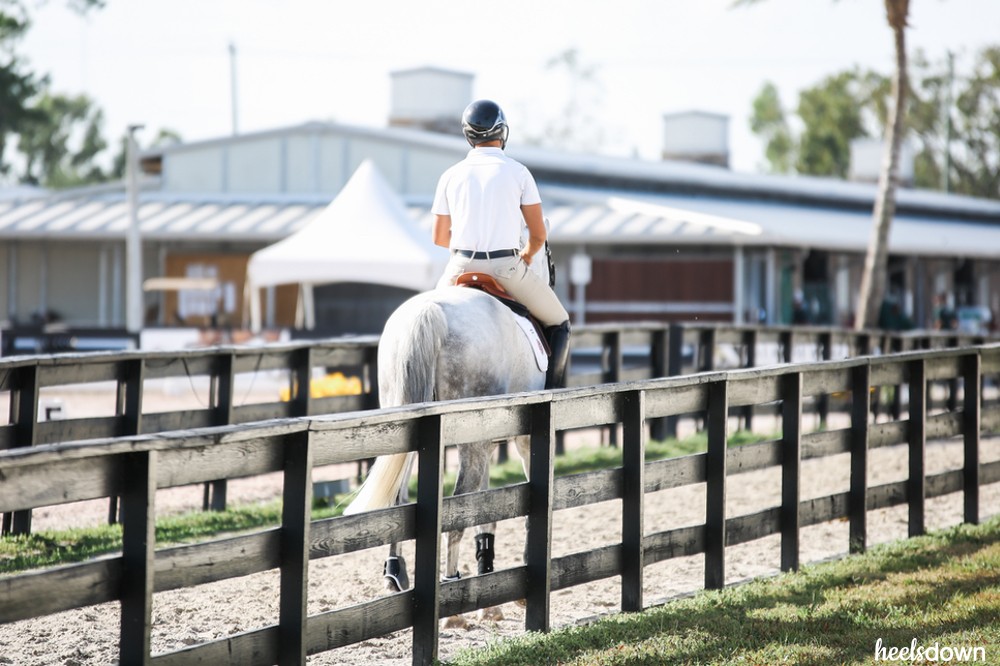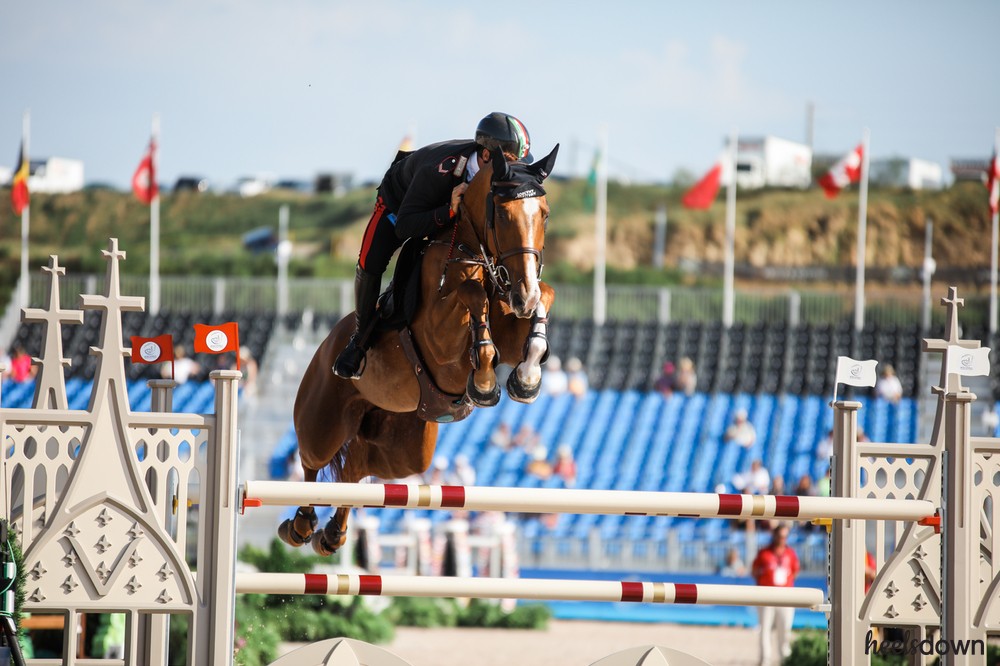Is It Cruel To Ride In The Heat?

Intense heat waves have driven hot and humid temperatures into the triple digits all across America.
These conditions often leave riders wondering, when is it too hot to ride? Or even, is it cruel to make my horse work in these intense conditions?
The answer may surprise you. Heat is dangerous for horses, and can have severe consequences when they are over-worked.
Spectators saw this first hand at the World Equestrian Games in Tryon last September, when horses died and others faced serious metabolic health issues during the endurance portion of the event. Several related events were canceled. But even show jumpers and dressage riders discussed how the heat affected their horses’ performance.
“There is a rule of 150, that when you add the temperature and the humidity, [For example: 90 degrees and 60 percent humidity] if it’s 150 or greater, you either shouldn’t work or you should really take it easy,” explained Dr. Lydia Gray, the staff veterinarian and medical director at SmartPak.
While Dr. Gray considers this method to be a fairly good guide for when to ride and when to call it quits because of the heat, there are some factors like geography and fitness that make the matter more complex.
Some riders and horses who live in northern climates might have a lower tolerance for heat than say some in the South, who are used to warmer and more humid climates year round.
“Some of it is common sense,” Dr. Gray said. “Temperature alone isn’t that great of an indicator of how well a particular horse may deal with the heat.”
Like This Story? Try: Polos vs.Boots – What’s Better For Sweaty Summer?
In addition, if a horse isn’t fit or has health conditions that may make him more susceptible to overheating (for example, if he suffers from anhidrosis or COPD), that heat tolerance threshold may be lower.
“If a horse is not fit, the time to ask him for that 100-mile trail ride is not the hottest, muggiest day of the year,” she explained. “Horses sweat to cool (and) to keep their core temperatures at 99.5 degrees. If the sweating mechanism is inefficient, they’re not going to be able to cool off, and then their core temperature is going to rise. That can actually become dangerous for them, like it’s dangerous for people.”
Tips To Keep Your Horse Cool
It’s not all about you – adjust your riding schedule. To reduce the risk of over heating, riders should make sure they’re working their horses during the coolest parts of the day, in the mornings and the evenings, and avoiding strenuous work during the peak hours when the temperatures are the hottest. It might be a pain to get up early in the morning, but riders should be doing what’s best for their horse. It might also be worth adjusting turnout time – night turnout is generally more comfortable for horses in hotter climates, and they can spend the hottest hours of the day in the shade of their stall, with a fan and ample water.

Consider feeding salt or electrolytes during the summer months. Salt and electrolytes replenish the nutrients horses lose when they sweat. Most nutritionists recommend avoiding sugar-based electrolyte brands and prefer salt-based products. Horse owners can also feed table salt as a top dressing over feed or provide free-choice salt and minerals, like a salt block.
You have A/C. Your horse doesn’t. So shower them often. Applying cold water via the hose or with a sponge is vital to bringing a horse’s core temperature down after a ride. It’s untrue that pouring cold water over hot muscles will cause cramping, according to Kentucky Equine Research. Hosing, sweat scraping, and hosing again helps cool out horses the fastest.
Read This Next: My Horse Stopped Sweating. Now What?
Encourage regular drinking. It should go without saying that a rider should offer plenty of breaks to their horse during exercise. Horses should also be encouraged to drink in between performing too. To encourage drinking, horse owners can use powdered drinks like Gatorade in the summer months, or consider soaking hay and feed (or feed wet mashes from beet pulp or pelleted hays).
How To Recognize Heat Exhaustion
Horses will become dull and depressed when they are feeling stressed due to the heat. Riders will likely see a lag in their performance and general lethargy in their behavior. They may also recognize a weakness in their horse’s gaits, like staggering and unbalanced steps.
If the horse begins to show signs of a high respiratory rate – such as taking quick, shallow breaths similar to panting – it’s time to call a vet. Horses in this condition may also show signs of having a high heart rate.
Horse owners should check their horse’s core temperature often. Any temperature rate over 104 is considered distressed and extremely serious. A normal temperature rate is 99 to 100 degrees. High temperature rates can lead to tying up, nervous system issues and even collapse.


